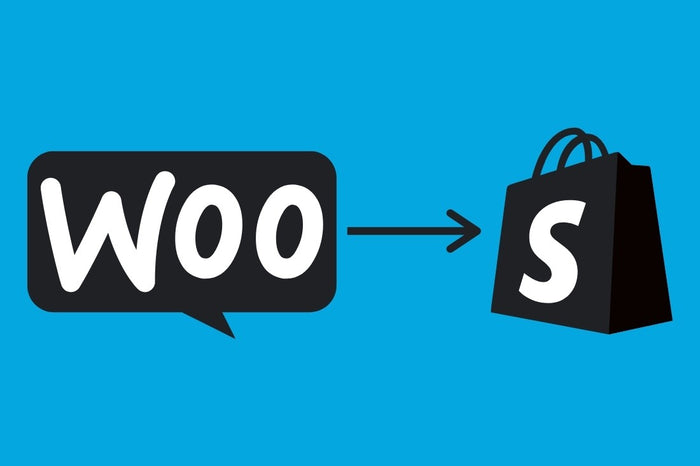Canada Post recently released their 2020 Canadian E-Commerce Report highlighting the key trends in Canadian E-commerce and what influences online shoppers in Canada. Our team of digital marketing & e-commerce experts have dissected the report to identify the key insights and translate them into actionable intelligence that every online retailer in Canada can use to increase their chances of online success in 2020 and beyond.
From key features & options that may influence a purchase decision, to important statistics that you need to keep in mind while building or optimizing your e-commerce website, this report is full of interesting information that will influence how you build and execute your digital strategy.
Understanding the behaviour of Canadian shoppers can help you get the biggest return from your online investment. When you understand what influences your potential customers in their decision to buy (or not to buy) from your company, it gives you the opportunity to focus on what will drive the most revenue over the next 12 – 24 months.
Canada post surveyed 5,000 Canadians who had completed online purchases over the past year to gain some key insights on what is important to them when they are shopping online.
Here are the key results:
A SNAPSHOT OF CANADIAN ONLINE SHOPPERS

Baby Boomers, those who were born between 1946 and 1964, make up the largest segment of Canadian online shoppers at 37%, followed by Millennials (1981 to 1996) at 28% and then Gen X-ers (1965 and 1980) at 25%. The mix is split almost exactly in half based on standard gender definitions, with 51% of online shoppers identifying as female and 49% of online shoppers identifying as male. The report did not seem to include any respondents who identified as non-binary.
Geographically, Canadian online shoppers tend to live in Urban (41%) or Suburban (38%) areas, as opposed to Rural (21%) locations.
The average household income of online shoppers sits at just over $100,000, and 70% of online shoppers live in a household without children.
WHAT THIS MEANS: Canadian online shoppers have disposable income and are willing to spend it. However, being located mostly in Urban & Suburban areas, they have local options if they are not able to find the products they want at a price point they are willing to pay. Convenience also plays a factor, as the busy lifestyles of these age groups would influence how long they are willing to spend searching for a specific product either locally or online.
THOSE WHO SHOP ONLINE DO IT FREQUENTLY

Only 6% of those who purchased online did so only once in 2019. The vast majority of Canadian online shoppers make between 2 – 12 purchases each year, while a small but powerful group representing 18% of the Canadian online shopping population completed more than 25 online purchases last year. This group, known as the Hyper & Hyper Elite segments made up 60% of all the online purchases made in Canada.
WHAT THIS MEANS: Once a Canadian shopper discovers the benefits of online shopping, they are likely to become repeat online purchasers. Those who shop frequently will – by experience – become savvier about online shopping and will need to be provided with an end-to-end experience which meets their high expectations.
TOP ONLINE SHOPPING CATEGORIES IN CANADA

In 2019, 15% of online shoppers purchased groceries online while 62% purchased some type of clothing or apparel. However, industry experts are projecting that online grocery shopping will increase dramatically in 2020 due to the Covid-19 pandemic which forced many Canadians to find alternative options for purchasing their groceries.
Other key categories included computers and electronics, books, footwear, beauty products, and home and garden needs.
Another interesting note is that more online shoppers purchase women’s apparel (42%) vs men’s apparel (32%).
WHAT THIS MEANS: Advances in how to showcase the features and benefits of a variety of products means that, in today’s e-commerce environment, practically any product that can be purchased in a retail store can and will be purchased online. These category data points will likely shift based on consumer purchase trends as well as availability of products through online channels. However, certain high-touch categories such as jewellery, sporting goods, and home decor, continue to lag behind other product types.
CANADIANS ARE MUCH MORE LIKELY TO BUY FROM CANADIAN SITES

Canadian shoppers continue to buy more frequently from Canada’s retailers. And 40% of them plan to shop with a Canadian online retailer during the coming year. This compares to only 8% of online buyers who intend to purchase from companies outside of Canada.
The number of cross-border purchases also sharply declined, with the average number of purchases made with companies outside of Canada reducing from 9.3 in 2018 to 7.3 in 2019, which a further reduction expected in 2020.
Interestingly enough, the preference for Canadian sites is substantially higher than the actual purchase patterns. Although 40% of Canadian shoppers are likely to purchase from a Canadian site in 2020, a full 61% would prefer to do so if the option were available.
This indicates that the demand for products from Canadian-based retailers is currently outweighing the supply.
Being Canadian made is also a strong influencer, with 55% of online shoppers preferring to purchase Canadian-made goods whenever possible.
WHAT THIS MEANS: Canadians continue to show an affinity for purchasing from other Canadians. In order to take advantage of this trend, retailers should feature their Canadian heritage whenever possible, including Canadian business ownership, Canadian offices, and Canadian-made products. Also, utilizing a .ca domain instead of a .com (or other generic options), also provides an instant signal to Canadian shoppers that they are shopping at a site dedicated to the Canadian market.
MANUFACTURERS ARE TAKING ADVANTAGE OF E-COMMERCE TO OFFER ESTABLISH TO CONSUMER MODELS

In 2019, 26% of shoppers reported that they purchased directly from a manufacturer through online channels. Among the Hyper and Hyper Elite segments, that number jumps to 39%, showing that savvy online shoppers know how to find the exact products they are looking for at the best value.
These numbers include direct-to-consumer channels such as manufacturer e-commerce websites as well as significant retail presence on marketplaces such as Amazon (link to Amazon page), Walmart, Best Buy, Wayfair, and more.
Users often sited that two key factors - either competitive pricing or product availability - influenced their decision to purchase directly from the manufacturer.
WHAT THIS MEANS: Manufacturers have a unique opportunity to create direct-to-consumer markets to drive higher profitability. However, they must be willing to establish fulfillment and customer service protocols to handle a higher volume of lower-unit sales. Manufacturers and Wholesalers must also balance the revenue that can be generated through direct-to-consumer selling models against the potential impact of self-competing against their authorized retailers.
SOCIAL SELLING CONTINUES TO GROW

Interactions with a brand’s social media channels is an important touchpoint in today’s customer journey, particularly among frequent and high-volume online shoppers. Using carefully targeted social selling and organic social media strategies are great ways to engage a larger portion of your potential customer base, drive awareness, and increase e-commerce traffic and revenue.
46% of online shoppers responded that they ended up visiting a retailer’s website or app after seeing an add on their social media platform.
But remember that social media was designed to foster conversations, hence the name. This is not a channel where you can post and run, you need to make sure your company stays active on critical social platforms (based upon your target audience), respond to comments and questions in a timely manner, and encourage visitors and shoppers to share your site’s content.
WHAT THIS MEANS: As a brand, you cannot afford to ignore social media as a strong channel to reach, engage, and convert new customers. Social channels also offer tremendous opportunities to turn customers into brand advocates, as they are often willing to share their experiences with your product and your company on various social media platforms.
MARKETPLACES OFFER AN EFFECTIVE WAY TO EXPAND YOUR COMPANY’S REACH

Amazon.ca has become a powerhouse in the Canadian e-commerce market, and 72% of survey respondents confirmed that they had made at least one purchase on Amazon.ca during the previous year. That’s nearly 10x penetration that other marketplaces such as Walmart.ca, Etsy, eBay, or Best Buy have managed to achieve.
However, an important element to Marketplace success is making sure to choose the right marketplaces based on where your target market shops and not just based on the size of the market.
WHAT THIS MEANS: With the penetration of marketplaces in the Canadian e-commerce ecosystem, retailers should look at ways to strategically incorporate selling through third parties. This increases your product’s exposure and also allows users to purchase products where, when, and how they prefer to do so. If you are only selling through your own website, you are missing out on a large portion of e-commerce traffic and revenue.
SUBSCRIPTIONS & RECURRING DELIVERIES OFFER RESIDUAL INCOME STREAMS

A continuing growth trend in Canadian e-commerce for 2020 are the subscription and recurring delivery models. These programs allow users to purchase once and then continue to enjoy repeat or prescribed deliveries of their favorite items without having to go back and complete each additional purchase manually.
Top subscription models in 2020 included meal kits, food, beauty, health, and clothing. Recurring deliveries had some overlap in the food, health, and beauty categories, but also saw the additional categories of office supplies, baby products, and pet food growing in popularity in 2019.
The key difference between subscriptions and recurring deliveries seemed to come down to variety. Subscriptions allowed companies to send out a unique set of items within the category of choice on a set schedule (think Cheese of the Month Club), whereas recurring purchases allowed users to pick how often a specific item would be automatically ordered, billed, and shipped to them.
WHAT THIS MEANS: Strongly consider if your products are suitable for a subscription or recurring shipment model. Nearly any consumable product would instantly quality for that option, providing your business with a residual revenue stream that can last for several years. However, if your products do not fit a recurring purchase model, trying to force one can put off otherwise loyal customers.
FREE SHIPPING CONTINUES TO DRIVE CONVERSIONS

Free Shipping, which used to be a promotional angle, is now a necessity as 80% of online shoppers stated that offering free shipping has a direct influence on their choice of retailers, and 67% of them stated that they would abandon a purchase if a free shipping option was not offered.
However, not all retailers can afford to offer free shipping on everything they carry, so some recommendations were included to help balance the need for free shipping against company profitability.
Establishing cart total thresholds to achieve free shipping is one of these opportunities. Research indicates that shoppers are willing to spend more on the products they want in order to avoid shipping fees, and this can help drive up e-commerce website average order values.
You can also offer faster shipping at a premium rate. Although having a free shipping option is important, buyers are often willing to pay a bit more to get the product in their hands a few days earlier. The average delivery expectation for a free shipping option is 7 days, whereas the average delivery expectation for a paid shipping option is 4 days.
WHAT THIS MEANS: Unless you offer a product that cannot be purchased anywhere else, free shipping is no longer an option, it is a necessity. Because of this, it is considered best practices to include your outbound freight costs into the cost of good sold so that you can set your prices and your margins accordingly. However, setting minimum order thresholds so that customers have to spend a certain amount in order to qualify for free shipping remains a viable strategy to ensure that you are generating enough profit to absorb the cost of shipping.
THE IMPACT OF LOYALTY PROGRAMS ON CANADIAN E-COMMERCE

Loyalty programs continue to be an effective way to engage with customers and increase revenue. 37% of those surveyed stated that participation in a loyalty or rewards program influenced their choice of retailer, and 71% stated that they tend to purchase more frequently from an online retailer who offered rewards and discounts tailored to their shopping behaviour.
However, today’s loyalty programs go beyond collecting points or getting the occasional discount. Offering value-added products and services to your loyal customers can help engage and retain customers who will spend more.
This can include early-access to new product or feature releases, special access to insider-only services, and more.
WHAT THIS MEANS: Loyalty programs need to be more engaging that a pure points system and should be tailored to provide unique benefits to your unique customer base. Consider surveying your customers to determine what features of a loyalty program would be attractive to them before launching.
HOW CANADIAN SHOPPERS FIND RETAILERS

One critical element of e-commerce success in Canada is making sure you are in front of potential buyers where they are looking for your products or services.
There’s an old saying that goes “You don’t know what you don’t know.” If your potential customers don’t know about you, they won’t know to look for you.
The report indicates that product searches, either through Google, Amazon, and other search engines or marketplaces, dominates the market with 58% of online shoppers using these methods to find and purchase items. This is nearly double the number of people who search for a specific retail store by name.
Another big group of shoppers discovered new products and retailers through social media channels, including organic posts from friends and family as well as paid placements by brands who were able to use the dynamic targeting options to reach new customers.
WHAT THIS MEANS: Canadian online shoppers continue to search for products more frequently than they do for brands. That is why SEO optimized website pages and enhanced marketplace content are critical to being found online. As a company, you need to be where customers are searching, which included search engines, marketplaces, and social channels.
THE CANADIAN E-COMMERCE LANDSCAPE CONTINUES TO EVOLVE

This picture of the Canadian shopper is very different from what it was even 5 years ago, and will likely change again – and again – over the next 5 years. Current estimates show that Canadians spent between $44 - $65 Billion in 2019 - depending on which report you read - and is projected to grow to almost $108 billion by 2023.
That is why it is important to keep a watchful eye on the shopper journeys that drive online shopper satisfaction, factors that generate new customers and build brand loyalty, as well as best practices to meet ever-changing shopper expectations.






